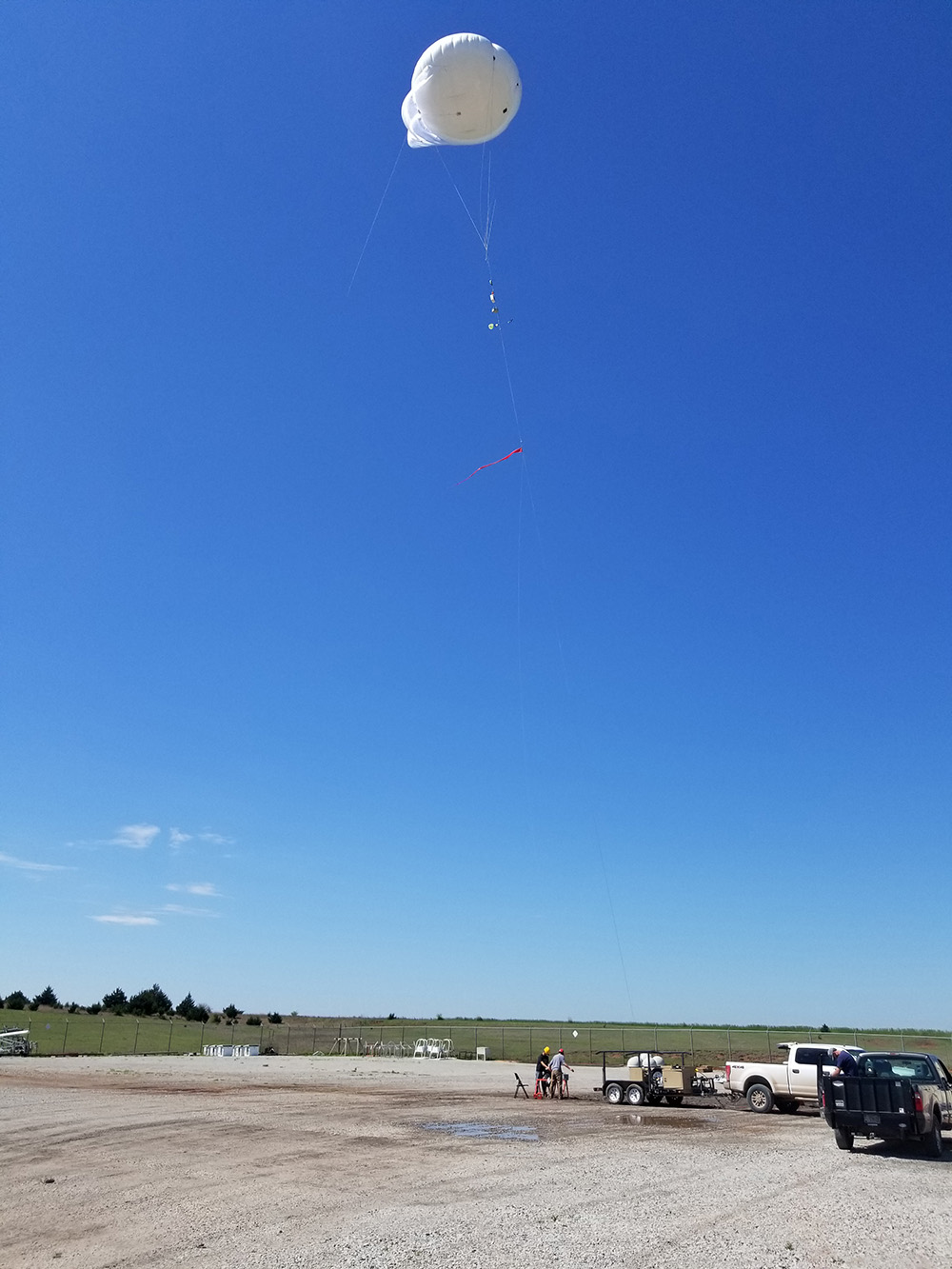ARM Plans More Tethered Balloon Flights in 2020
Published: 8 August 2019
Submit your guest instrument proposals now

In 2020, the Atmospheric Radiation Measurement (ARM) user facility plans to continue the practice of tethered balloon flights at Oliktok Point, Alaska, and at its Southern Great Plains (SGP) atmospheric observatory. ARM is calling for proposals to fly guest instruments on tethered balloon systems (TBS) in conjunction with these missions.
As in previous years, flights at Oliktok are expected to include measurements within clouds, such as temperature, humidity, wind, supercooled liquid water, and aerosol number concentration and size distribution (from approximately 0.15 to 3 micrometers). The TBS payload will include instruments ARM has previously flown. It is also expected that aerosol impactors will be deployed on a subset of these flights to enable offline analyses of aerosol properties. The maximum altitude for flights at Oliktok is expected to be 1.5 kilometers (4,921 feet) depending on conditions.
Flights at the SGP will be in clear air only. The altitude range for flights at the SGP is currently 1 kilometer (3,281 feet) above ground level. A request has been submitted to extend this range.
ARM plans to conduct a series of approximately five missions between the SGP and Oliktok. Tentatively, missions at the SGP will include flights in the winter, spring, and summer, while flights at Oliktok are expected to be carried out in the spring and fall. Each mission will last eight to 12 days, with approximately 10 hours of flying per flight day.
Guest Proposals Welcome
ARM will consider proposals to fly guest instruments during the Oliktok or SGP TBS missions. Investigators can propose instruments that have not previously flown on the ARM TBS; however, factors that will be considered in proposal reviews include:
- relevance to the ARM mission
- whether the instrument has previously flown on a tethered balloon
- the instrument’s weight
- the expected effort required by ARM staff for integration of the instrument onto the tethered balloon.
ARM will provide integration support for approved campaigns; however, ARM will not provide funding to principal investigators. Proposals will be reviewed during quarterly field campaign reviews by the ARM Infrastructure Management Board. To be eligible for these reviews, proposals must be received by:
- September 16, 2019, for campaigns starting between February-May 2020
- December 2, 2019, for campaigns starting between June-September 2020.
Details of potential guest instruments will need to be worked out with ARM operations, but here are a few preliminary guidelines:
- Guest instruments must be battery powered and cannot exceed 61 centimeters (24 inches) in any dimension.
- Depending on weather conditions, mission requirements, and the TBS platform in operation, a total payload weight capacity of up to 32 kilograms (70 pounds) is available on the TBS.
- Core ARM TBS instrumentation will consume a minimum of 7.75 kilograms (17.1 pounds) of payload weight capacity.
Sandia National Laboratories manages the Oliktok Point site, and Argonne National Laboratory manages the Southern Great Plains observatory.
Keep up with the Atmospheric Observer
Updates on ARM news, events, and opportunities delivered to your inbox
ARM User Profile
ARM welcomes users from all institutions and nations. A free ARM user account is needed to access ARM data.


















